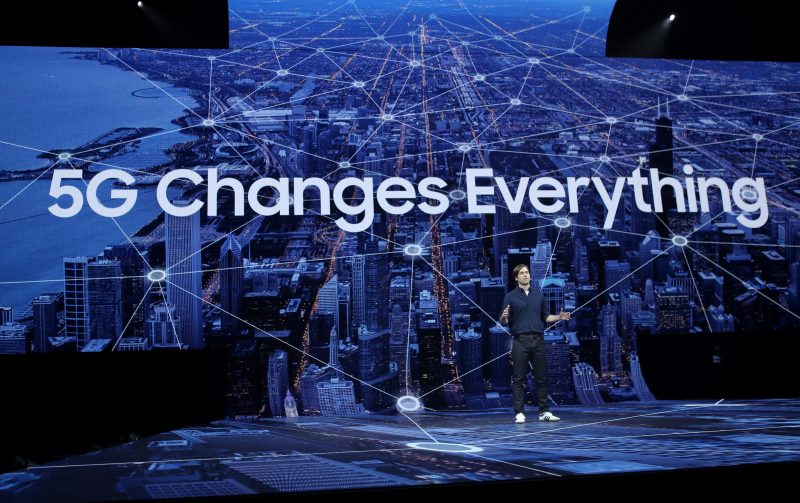With 5G hype high, consumers risk disappointment
But when? (JUSTIN SULLIVAN)
Barcelona (AFP) – The telecoms industry is gearing up for 5G, the next generation wireless networks which could enable new technologies such self-driving cars and robot surgeons. But it may be raising expectations too early.
As industry leaders gather at the Mobile World Congress trade fair in Barcelona this week, some warn consumers risk disappointment because the benefits 5G’s much faster speeds and vast data capacity can provide are still a long way from becoming reality.
For example while 5G will bring near-instantaneous connectivity for smartphones and can virtually eliminate latency — the lag-time when data is sent or received — this “will only be a reality in 2023-2025”, said Yannick Sadowy, the director for telecoms and media and consulting firm Accenture.
“We are still in the early stages,” he added.
Before 5G becomes a reality for consumers, two transitions need to take place.
Mobile operators have to upgrade their networks with 5G gear made by companies such as China’s Huawei and Finland’s Nokia, and phone makers need to make handsets with built-in 5G radios that can hook up to these networks.
But analysts don’t expect 5G compatible smartphones to be become widely available until the second half of 2019 and the first models will be expensive.
And it will take even longer for the geographical reach of the 5G networks which are starting to be rolled out this year to be extensive enough to let you use your 5G phone without having to rely on current 4G wireless standards for most of the time.
– ‘Be patient’ –
Mobile communications industry body GSMA, which represents nearly 800 operators, forecasts 4G will still account for 45 percent of worldwide mobile subscriptions in 2025, while 5G would only be at 15 percent.
“5G will still be a reasonably small technology in 2025 but it will have a good pickup,” GSMA director general Mats Granryd told AFP. “One needs to be patient,” he added.
GSMA estimates capital expenditure on mobile networks worldwide would be $500 billion over the three years between 2018 to 2020.
To get the new technologies which 5G promises to unlock “you first need a network which will cost a fortune to deploy and has an uncertain return on investment,” said IHS Markit analyst Stephane Teral.
“The risk of disappointment exists,” he added.
Expectations are high. More than half of consumers in developed countries, 54 percent, expect 5G networks to deliver faster speeds, and one in four expect it to deliver “innovative new services”, according to a survery carried out by the GSMA last year.
– ‘Revolutionary technology’ –
5G “will be a revolutionary technology but in the long term, it will take time to see everything which it will allow one to do with a smartphone but it will surprise us,” said Dexter Thilien, an analyst at Fitch Solutions.
Telecoms operators in Europe appear to have learned from the mistake of overpromising when 3G networks were first introduced in the continent in the early 2000s and have not played up 5G, although the same can not be said for operators in the United States, he added.
At the time there was much hype around 3G but the first iPhone, compatible with the third-generation cellular network, only came out in 2008.
The main benefit for telecom operators in the short term will come from the surge in data consumption on the part of their consumers which 5G netowrks will spark, said Thomas Coudry, a telecoms analyst at Bryan, Garnier & Co.
As wireless speeds have increased over the past decade, consumers’ data usage has soared. And 5G could usher in a world of ultra-high definition video on smartphones and a host of apps which will lead to even higher data usage.
Disclaimer: This story is published from a syndicated feed. Siliconeer does not assume any liability for the above story. Validity of the above story is for 7 Days from original date of publishing. Content copyright AFP.


